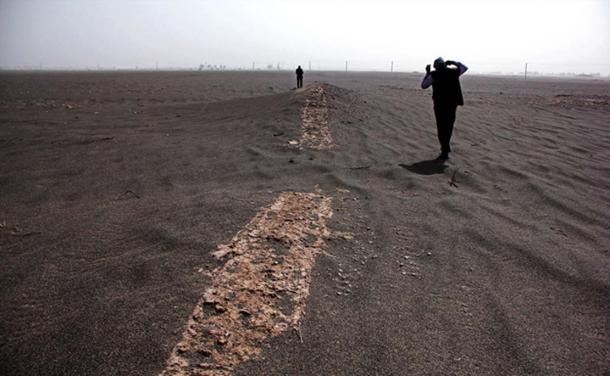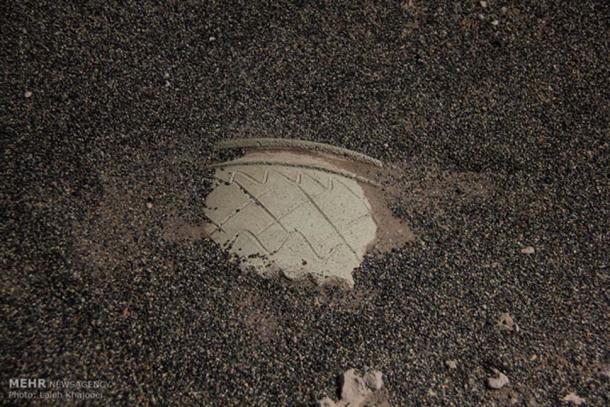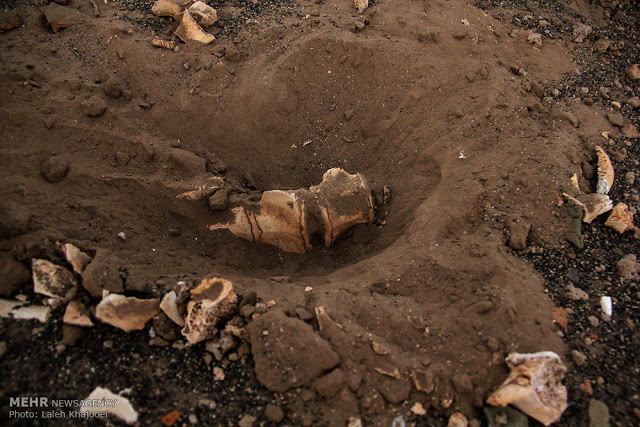Sandstorm in Iran unearthed an ancient city
A new sandstorm in Iran has uncovered a number of ruins that have been thought to be in the old city or necropolis. Initial analyses suggest it dates back to the early Islamic Middle Ages (661-1508 AD), but it could also be much older or even more recent. Iranian authorities are taking no chances as armed military guards are keeping the site safe from looters.
The Mohammad Vafaei of the Cultural Heritage, Handicrafts, and the Tourism Organization said in the Tehran Times, “A team of archaeologists was sent to Fahrraj to determine whether the site was a necropolis or an inhabitance.”
The CHHTO archaeologists will examine the site’s artifacts and survey the ruins of the structures to get a better idea of the age of the complex. It measures about 5,000 square meters (53,820 square feet).

After initial examination members of the team have refused to speculate about how old the site may be, says the Financial Tribune of Iran.
The sandstorm struck in late March, exposing ancient ruins and broken earthenware and adobe, according to the governor of Fahraj in Kerman Province, Nejad Khaleqi.
Mr. Vafaei demurred, saying, “One cannot claim that an area is historical as soon as several objects appear from under the ground after storms and floods since they might have been carried from other regions by water or storm.”
Tentative conclusions are being drawn, however, as Hamid Rouhi, the deputy chief of the provincial CHHTO estimated that the site dates from the Islamic Middle Ages of 661 to 1508 AD.
“It is the first time that such ruins have emerged so there is no precise data on their age and history,” Mr. Rouhi told the Financial Tribune. He said officials will release more information as soon as it is available.


The CHHTO has called in the Research Institute of Cultural Heritage and Tourism. They hope the site can be added to the National Heritage List after studies confirm its age, the Financial Times says.
It would not be unprecedented to find old sites in the Kerman area, as both Fahraj and Rigan have multiple ancient sites. New ones that were discovered with floods in the past few months are being excavated in Rigan and Negin Kavir.
Big, sprawling Kerman Province is something of a cultural melting pot, blending various regional cultures over the course of time. It is also home to rich tourist spots and historical sites including bazaars, mosques, caravanserais, and ruins of ancient urban areas.
The Islamic Middle Ages were termed the Islamic Golden Age because of Muslim scholars’ study, preserving and expanding knowledge in the areas of engineering, technology, geography, law, sciences, and medicine.
The scholars also explored the arts, poetry and literature, philosophy, economics, navigation, and sociology, says the site IslamicHistory.org.
From the mid-7th century through the mid-13th century, the Islamic World was the center of world learning and scientific development.
The Islamic Golden Age gave rise to countless inventions and innovations, while Islamic scholars were key to preserving the knowledge of the Greeks and other ancient civilizations.
The Abbasid Caliphate was heavily Persian-influenced and some of its greatest scholars were indeed Persians.





